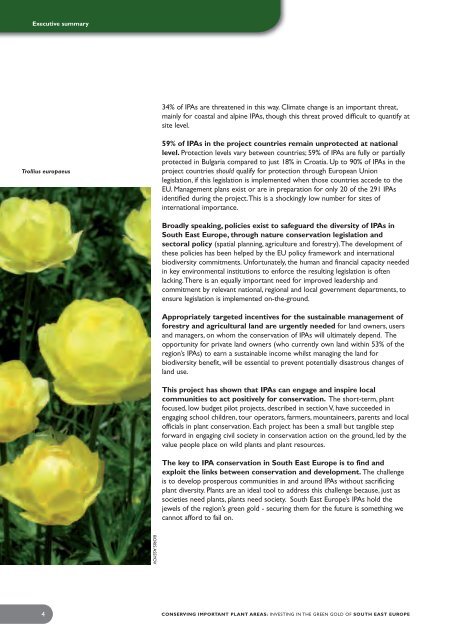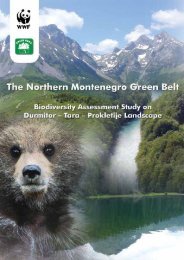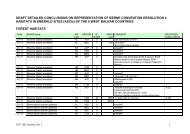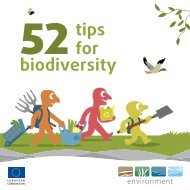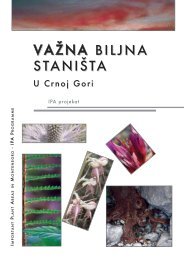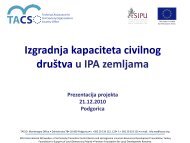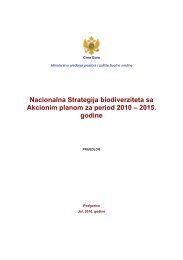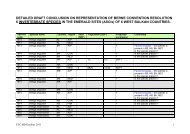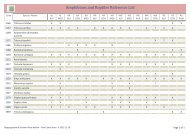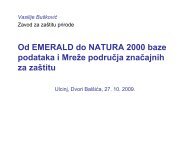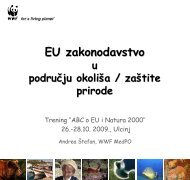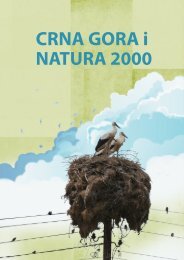conserving important plant areas: investing - Plantlife
conserving important plant areas: investing - Plantlife
conserving important plant areas: investing - Plantlife
You also want an ePaper? Increase the reach of your titles
YUMPU automatically turns print PDFs into web optimized ePapers that Google loves.
Executive summary<br />
Trollius europaeus<br />
4<br />
BORIS ASSYOV<br />
34% of IPAs are threatened in this way. Climate change is an <strong>important</strong> threat,<br />
mainly for coastal and alpine IPAs, though this threat proved difficult to quantify at<br />
site level.<br />
59% of IPAs in the project countries remain unprotected at national<br />
level. Protection levels vary between countries; 59% of IPAs are fully or partially<br />
protected in Bulgaria compared to just 18% in Croatia. Up to 90% of IPAs in the<br />
project countries should qualify for protection through European Union<br />
legislation, if this legislation is implemented when those countries accede to the<br />
EU. Management plans exist or are in preparation for only 20 of the 291 IPAs<br />
identified during the project.This is a shockingly low number for sites of<br />
international importance.<br />
Broadly speaking, policies exist to safeguard the diversity of IPAs in<br />
South East Europe, through nature conservation legislation and<br />
sectoral policy (spatial planning, agriculture and forestry).The development of<br />
these policies has been helped by the EU policy framework and international<br />
biodiversity commitments. Unfortunately, the human and financial capacity needed<br />
in key environmental institutions to enforce the resulting legislation is often<br />
lacking.There is an equally <strong>important</strong> need for improved leadership and<br />
commitment by relevant national, regional and local government departments, to<br />
ensure legislation is implemented on-the-ground.<br />
Appropriately targeted incentives for the sustainable management of<br />
forestry and agricultural land are urgently needed for land owners, users<br />
and managers, on whom the conservation of IPAs will ultimately depend. The<br />
opportunity for private land owners (who currently own land within 53% of the<br />
region’s IPAs) to earn a sustainable income whilst managing the land for<br />
biodiversity benefit, will be essential to prevent potentially disastrous changes of<br />
land use.<br />
This project has shown that IPAs can engage and inspire local<br />
communities to act positively for conservation. The short-term, <strong>plant</strong><br />
focused, low budget pilot projects, described in section V, have succeeded in<br />
engaging school children, tour operators, farmers, mountaineers, parents and local<br />
officials in <strong>plant</strong> conservation. Each project has been a small but tangible step<br />
forward in engaging civil society in conservation action on the ground, led by the<br />
value people place on wild <strong>plant</strong>s and <strong>plant</strong> resources.<br />
The key to IPA conservation in South East Europe is to find and<br />
exploit the links between conservation and development. The challenge<br />
is to develop prosperous communities in and around IPAs without sacrificing<br />
<strong>plant</strong> diversity. Plants are an ideal tool to address this challenge because, just as<br />
societies need <strong>plant</strong>s, <strong>plant</strong>s need society. South East Europe’s IPAs hold the<br />
jewels of the region’s green gold - securing them for the future is something we<br />
cannot afford to fail on.<br />
CONSERVING IMPORTANT PLANT AREAS: INVESTING IN THE GREEN GOLD OF SOUTH EAST EUROPE


